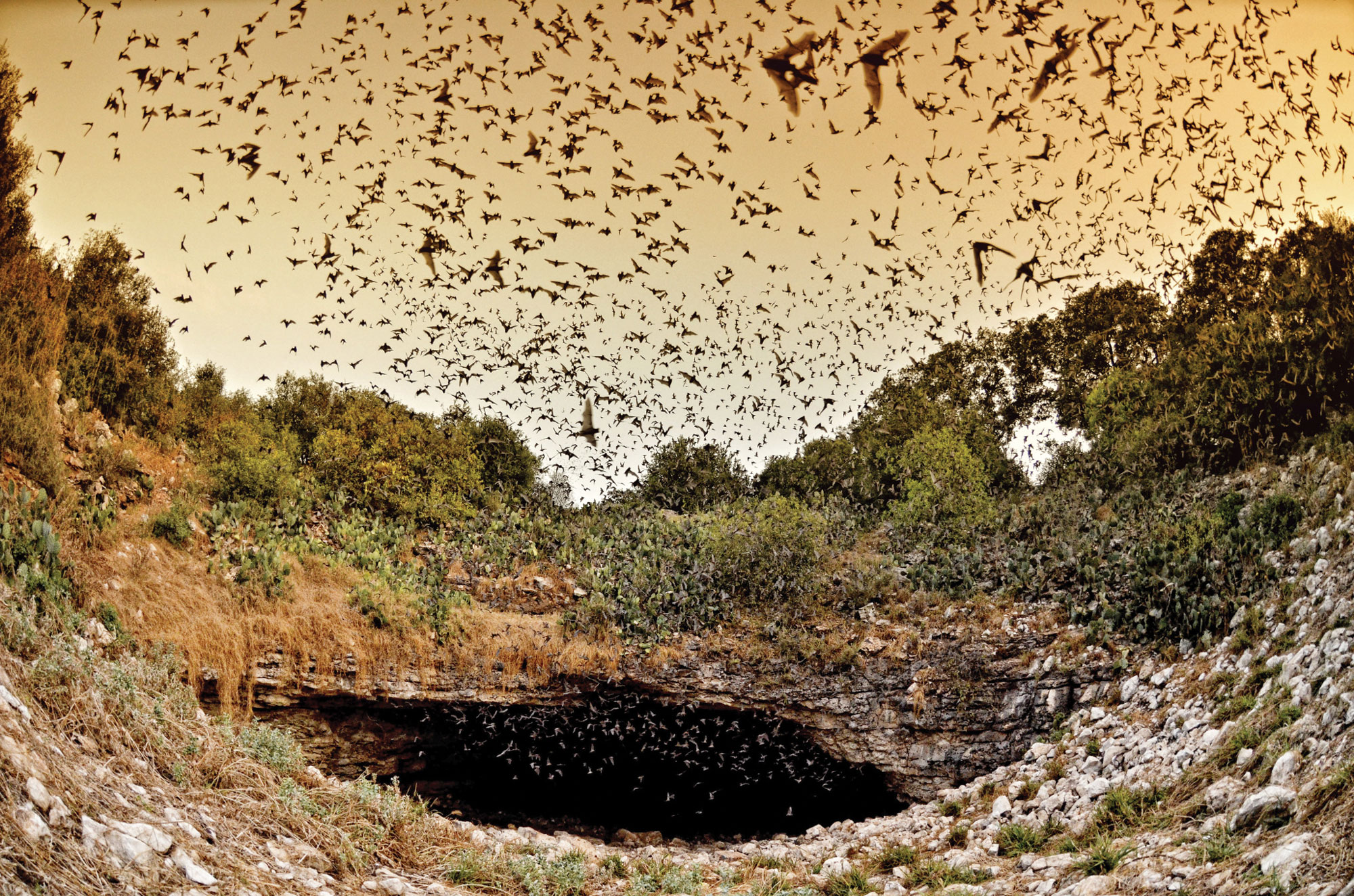
Fragile Species
Can bats survive in a human-engineered world?
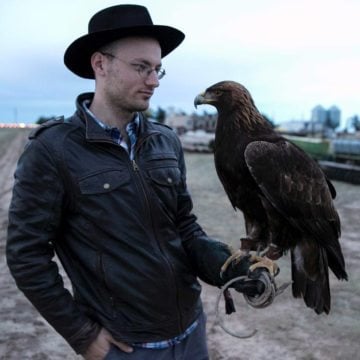
This is the world of the colony. At the bottom of the Bracken Cave sinkhole, beneath piles of white rock and tangles of prickly pear cactus, beneath layers of crumbling Cretaceous limestone, the cave mouth opens into a black expanse 600 feet wide and 125 feet long. Inside, humid air presses against the rock ceiling, warmed by the body heat of millions of roosting Mexican free-tailed bats. Amid the huddled bodies, pups clamber over mothers to nurse. Males rustle and preen. Their song echoes through the dark, a high-pitched twittering at the edge of human hearing.
When the sun sets, the adults detach from the ceiling, arms snapping into foot-long wingspans, first in the hundreds, then in the thousands, streaming into the twilight to hunt. The collective flight happens all over the Hill Country. Cave myotis bats emerge from the cracks in cliffs, red and yellow bats slip from beneath the loose tree bark of rotting snags, and thousands of Mexican free-tailed bats fly from beneath the bridges of Austin and San Antonio. An age-old cycle continues: The bats brave the starlit skies, hunting swarms of insects and being hunted themselves, successive populations flying above a changing world.
But today, the changes certain bats face are coming faster than ever. To the east of Texas, a fungal infection called White Nose Syndrome moves west cave by cave, leaving obliterated bat populations in its wake. Closer to home, the cumulative effect of decades of pesticide use and the emergence of wind power have proven inadvertent but equally indiscriminate killers. Which makes bats a potent symbol for an increasingly important question: As humanity engineers more and more of the world for our own survival, how can we make sure other species come along for the ride?
There’s an idea bandied around by ecologists that’s important to keep in mind when talking about bats: the concept of “ecosystem service providers,” a term for the pollinators, decomposers and predators that are vital to any functional habitat. Bats belong firmly in this category. To understand why, it helps to visit one of the 12 free-tailed bat colonies dotting the Hill Country.
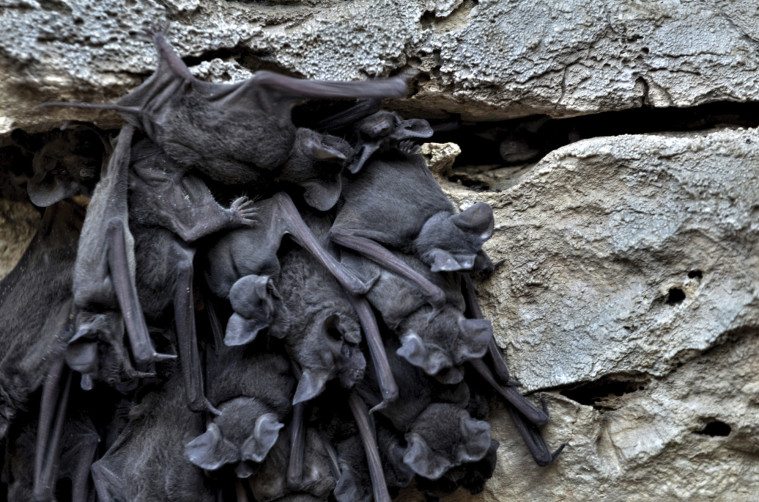
The most notable lies inside the Bracken Cave Preserve, a stretch of limestone bluffs and scrub forest 25 miles northeast of San Antonio. The protected land — managed by Bat Conservation International and the Nature Conservancy — is a refuge for threatened species. But the true attraction of the site is Bracken Cave itself — the summer home of 10 million to 20 million Mexican free-tailed bats, the largest bat colony in the world.
Preserve Director Fran Hutchins and I met at the cave on a cool January day, the sole sign of the hidden colony an ammonia stink in the air. “There are only 80,000 to 90,000 bats down there right now,” Hutchins said, pointing into the dark. The cave operates a bit like a timeshare, he explained. The majority of the summer colony departs for Latin America at the start of the winter. Taking their place from November to March are free-tailed bats from places such as Missouri and Arkansas. “Free-tailed bats don’t hibernate, and the nights out in Texas aren’t bad,” Hutchins said. “You have enough nights where it’s over 40 degrees, and they can come out and hunt.”
“It’s going to be too late for many of our eastern [bat] species, but I don’t think it’ll be too late for many of our western ones.”
For central Texas cotton farmers, free-tailed bats and other species save about $700,000 to $800,000 a year in crop damage and pesticide usage, according to Hutchins. A 2011 study in Science points out that in Texas alone “the value of pest suppression services provided by bats ranges from about $12 to $173 an acre, with a most-likely scenario of $74 an acre.” Hence the term “ecosystem service provider.”
The bats of Bracken Cave and other Hill Country colonies provide a vital check on insect populations, and serve as food for local predators. When they falter, the ecosystem falters, and the crashes can happen with remarkable swiftness in ways nobody sees coming.
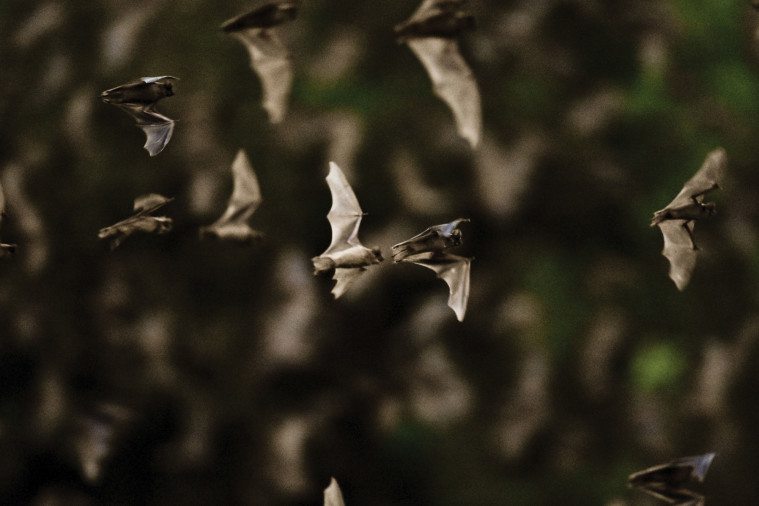
In February 2006, a visitor to Howe Caverns in upstate New York noticed an odd white dusting of fungus covering the noses and wings of hibernating bats. The next winter, bats began dying. According to a January 2008 report by the Associated Press, researchers found more than 11,000 dead bats, as well as signs of fungal infections in caves all over New York state and Vermont.
The killer, christened White Nose Syndrome by scientists, was a cold-loving Eurasian fungus, possibly carried into the country by human tourists. The symptoms are lethally simple: The fungus’ painful growth on a dormant bat wakes it up. Hibernating bats get through the winter by slowing their metabolisms and living off their fat reserves. A bat that wakes loses 30 to 60 days of fat supply. Continuously awoken by the pain, infected bats quickly starve. Those that survive are often re-infected the next winter.
Over the next few years, spores of the fungus hopscotched like lightning between caverns, carried by migrating bats and transmitted by physical contact among the huddled colonies. White Nose Syndrome is now present in at least 25 states and five Canadian provinces, from Nova Scotia to Georgia. Among the seven hibernating bat species affected, the mortality rate is horrific. Bat Conservation International (BCI) estimated in 2012 that 5.7 million bats have died since the fungus was introduced. According to Katie Gillies, director of BCI’s U.S./Canada Imperiled Species Program, relatively small eastern populations of species including the tricolored bat have plummeted by 96 percent. The little brown bat has suffered a mortality rate of 94 percent and several cave colonies have been entirely wiped out. “We’re talking extinction level impact here,” Gillies said. “We’re never going to see these bat populations stabilize in our lifetime. They’re gone.”
Now the disease is spreading west. For the last few years, Gillies and other researchers have made annual trips to North Texas to check for the fungus’ presence. In 2015, it was reported in caves along the northeastern corner of Oklahoma. “Every year it becomes more and more likely we’re going to find it [in North Texas],” she said. What happens when it reaches the state is unclear. Gillies said Mexican free-tailed bats like the ones in Bracken Cave probably won’t be affected by the disease. They don’t hibernate, and many of the caves they roost in don’t get cold enough for the fungus to take root. However, they could end up being carriers, infecting colder caves used by hibernating species in their migrations northward. And other Texas bat populations, such as local colonies of tricolored bats, are vulnerable.
The result of the winnowing is an unsteady world composed of the dwindling species that can squeeze through the bottleneck.
That’s where the geography of Texas provides an opportunity. In order for the fungus to spread west, Gillies said, it likely has to infect bat caves in North Texas. So BCI and its partners, including the U.S. Fish and Wildlife Service, hope to hold the line there by introducing the antifungal bacteria. “If we can develop some of these short-term tools at these chokepoints, this will buy us a few years to work on long-term solutions,” she said. In terms of catastrophic declines, Gillies said, “it’s going to be too late for many of our eastern species, but I don’t think it’ll be too late for many of our western ones.”
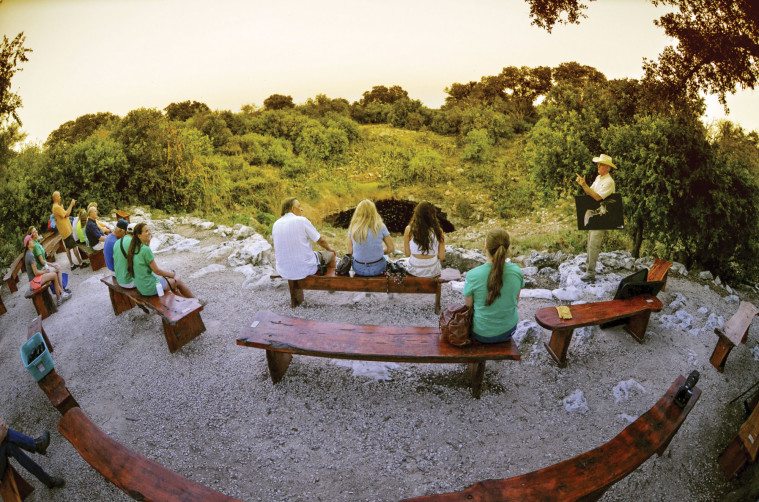
For now, the more important threat to bats in the Hill Country comes not from White Nose but from wind power. According to the U.S. Energy Information Administration, the wind industry, spurred by tax incentives and new technologies, has been the fastest-growing source of renewable energy since 1990. With wind farms in West Texas and on the coast, Texas has been at the forefront of the charge. John Anderson, director of environmental affairs for the American Wind Energy Association, says Texas is the United States’ largest source of wind power, with fully 10 percent of the power provided by turbines. The ecological benefits of wind energy are vital when it comes to combating climate change, Anderson says.
But that energy comes at a cost. In 2003, ecologists noticed that wind turbines across the country were killing bats and birds at prodigious rates. It was a truth the wind industry was slow to wake up to, Tuttle said. When he first brought the issue to their attention, companies responded that they’d had turbines in Texas for years without major wildlife fatalities. “Have you looked?” Tuttle asked. The companies then agreed to let Tuttle poke around at a Texas wind farm. “The manager of the site when we got there told us he thought we were wasting our time, because in all his time there he’d never seen any problem,” Tuttle said. “I walked about 50 feet, picked up a dead bat, and said, ‘This is the problem.’”
BCI estimates that wind-farm-related bat deaths across the country at anywhere from 600,000 to 900,000 annually, a number supported by academic studies. In Texas, that number may be as high as 100,000, according to Cris Hein, director of wind energy at BCI. But since companies in Texas are not required to provide data on bat fatalities to the public, the precise number of kills is hard to pin down.
Now bat conservationists fear wind farms will expand into the Hill Country, and turbines will be erected where they would be most dangerous for bats — in the vicinity of the 12 maternity colonies scattered from San Antonio to Mason, where millions of seasonally breeding females have pups relying on them. The farms would also directly threaten other Hill Country bats hunting in the area. Tuttle, Gillies and Hutchins are adamant: Wind farms simply cannot be allowed to enter the region.
”When they come out, it’s a tornado, a vortex of bats.”
Wind farms can mitigate wildlife damage by increasing the cut-in velocity, the amount of wind necessary for the blades to begin to turn, so that turbines operate only when wind speeds are too high for most bats and birds to be flying. The result, Hein said, could reduce bat mortality by around 40 percent, with a minimal loss in power. In 2015, the American Wind Energy Association voluntarily adopted language suggesting that companies increase the cut-in velocity and limit operation of turbines during the fall migration season, when there are more bats in the sky. The federal government has chipped in. In 2015, the U.S. Department of Energy announced that it would allocate $1.75 million for development of technologies to deter bats from approaching wind towers, including an ultrasonic blade-mounted whistle that could warn bats about the presence of blades.
But it’s not clear that such measures are enough. Everyone I spoke to, including people at BCI, was concerned that wind companies generally face limited oversight. “We don’t know enough about what’s going on in this part of the country,” Tuttle said, echoing a common refrain. Even if the Texas wind industry mitigates its impact, Tuttle said, that mightnot be enough. “If they manage to reduce kills by 75 percent, we still don’t know if [Texas] bats over time could survive that,” he said. “Their whole life strategy is primed around slow reproduction but a long life. Most of America’s bats were already in decline from habitat loss, pesticide poisoning, and people just killing them. We don’t know that current turbine level use, on top of the things [American] bats already face, is going to be sustainable.”
All of this speaks to a larger issue: The world is changing. Global climate change has led to extremes in weather patterns, which puts more pressure on environments and their species. In a 2015 article in Science by Gerardo Ceballos and others, the authors estimated that the extinction of vertebrate species during the last century is more than 100 times the normal rate. Across the planet, local biodiversity also is plummeting, leaving more and more animals scrabbling to survive in changing, human-engineered habitats — agricultural fields, cities and backyards. The result of the winnowing is an unsteady world composed of the dwindling species that can squeeze through the bottleneck. It’s easy enough to feel reassured by the assumption that humans will always be among them. But that misses the repercussions of designing the planet around ourselves, fiddling with an intricate system in the pursuit of maximum resources.
While the appetite of the global economy has been fed, the underlying ecosystem has crumbled, and the fallout belongs not to the distant future but to the present: declining fish stocks, rising pest populations and pathogens, and vast swaths of landscape picked clean by uncontrolled herbivores. In response, humanity has doubled down with more dams, engineering and agricultural monocultures. But humans can’t replace the ecosystem service providers, the bats, wolves and bees that allow the world to regulate itself and thrive. The services of these animals have to be paid for now, through investing in cures for pathogens, giving up revenue from economic development, and maintaining biodiversity. Saving the natural world is not just a moral choice: It is an economic choice. Regardless of the outcome, humanity will have to pay.
[Featured image: Millions of Mexican free-tailed bats (Tadarida brasiliensis) arise from the Hill Country’s Bracken Cave in their nightly hunt for insects. By Jonathon Alonzo / Bat Conservation International]


